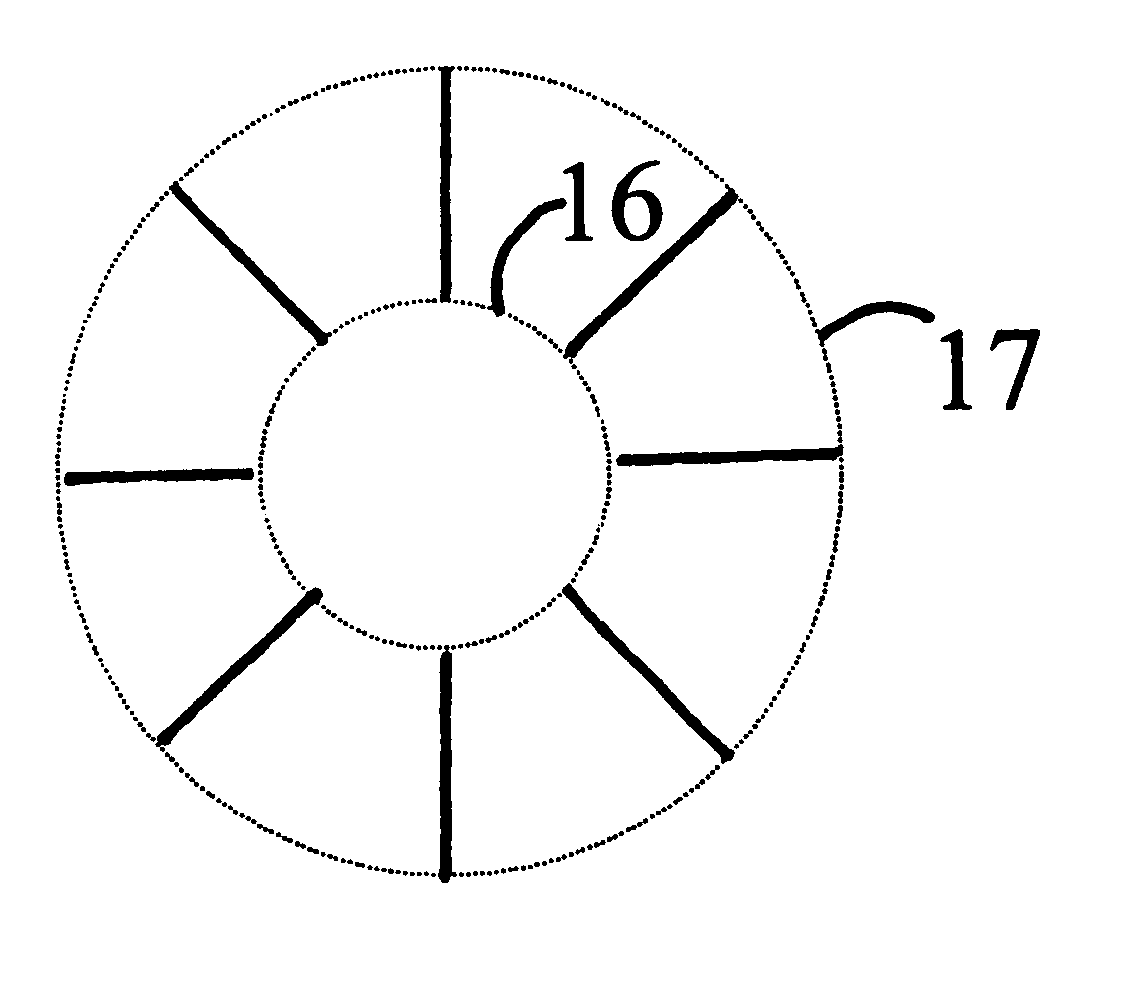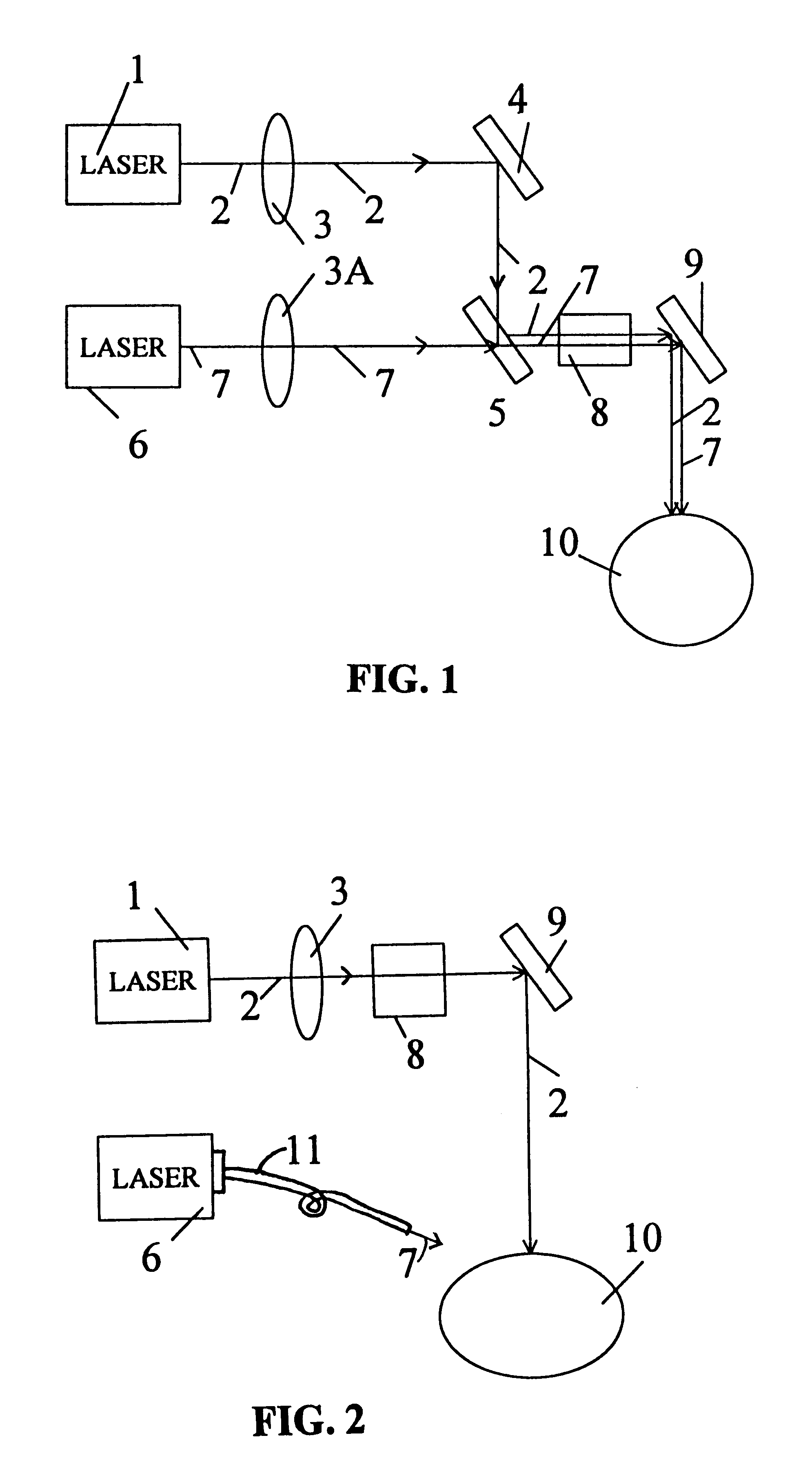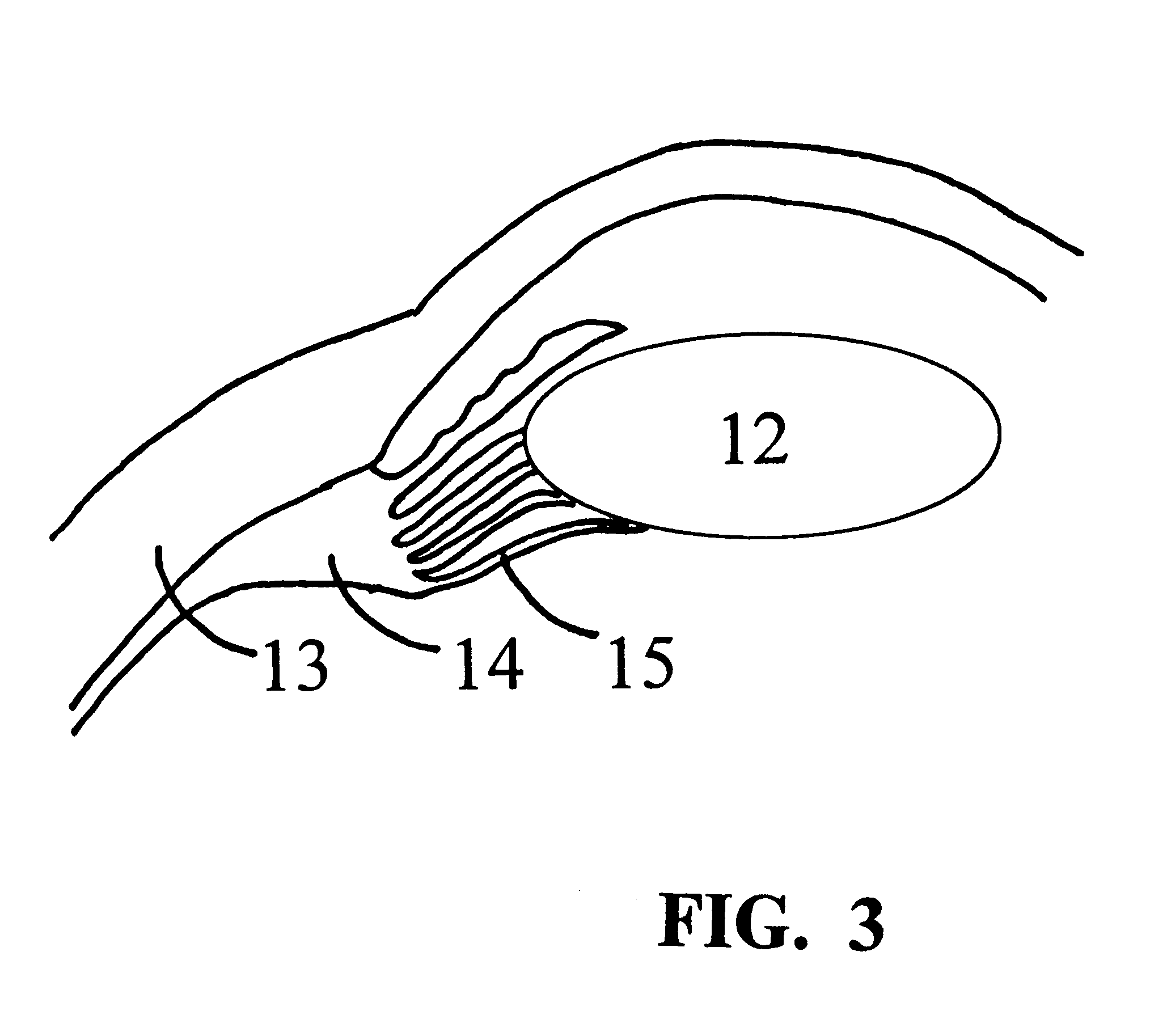Treatment of presbyopia and other eye disorders using a scanning laser system
- Summary
- Abstract
- Description
- Claims
- Application Information
AI Technical Summary
Benefits of technology
Problems solved by technology
Method used
Image
Examples
Embodiment Construction
FIG. 1 of the drawings is a schematic of a laser system having an ablative laser 1 producing a laser beam 2 of a predetermined wavelength and focused by a lens 3 onto a reflecting mirror 4 which is coupled to another reflecting mirror 5. The system also consists of a coagulation laser 6 having a laser beam 7 of a predetermined wavelength focused by a lens 3A through a mirror 5. The ablation laser 1 beam 2 and the coagulation laser 6 beam 7 are directed onto a scanner 8. The beams 2 and 7 are then reflected by a mirror 9 onto the cornea 10 of a patient's eye. The scanner 8 consists of a pair of motorized coated mirrors with a 45 degree highly reflecting both the ablative laser beam 2 and the coagulative laser beam 7. The mirror 4 and mirror 9 are highly reflective to the wavelength of the beams 2 and 7. Mirror 5 is coated such that it is highly reflective of laser beam 2 but highly transparent to laser beam 7. The focusing lens 3 has a focal length of about 10-100 cm such that the sp...
PUM
 Login to View More
Login to View More Abstract
Description
Claims
Application Information
 Login to View More
Login to View More - R&D
- Intellectual Property
- Life Sciences
- Materials
- Tech Scout
- Unparalleled Data Quality
- Higher Quality Content
- 60% Fewer Hallucinations
Browse by: Latest US Patents, China's latest patents, Technical Efficacy Thesaurus, Application Domain, Technology Topic, Popular Technical Reports.
© 2025 PatSnap. All rights reserved.Legal|Privacy policy|Modern Slavery Act Transparency Statement|Sitemap|About US| Contact US: help@patsnap.com



